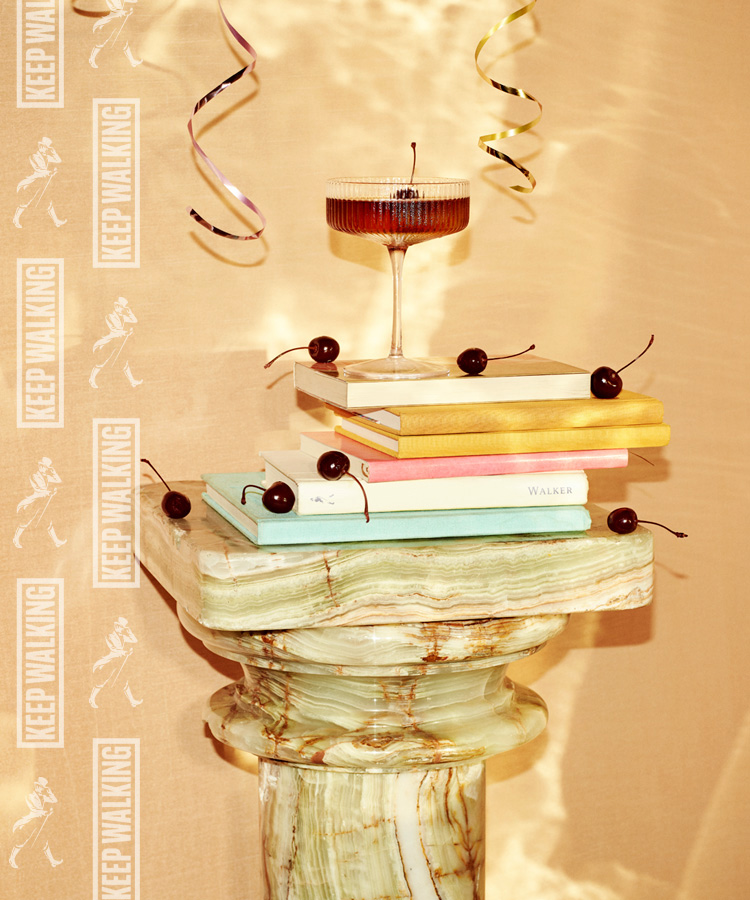
At this point in the calendar year, there’s little debate over whether or not winter has arrived. But one quick look at the thermostat will denote that it’s here and the only question is what you’re going to do about it.
There are many fine answers to this question, including learning how to fondue, finally taking skiing lessons, or booking the next flight to Florida. But for our purposes today, we’re most interested in a particular cocktail dubbed the Rob Roy.
The Rob Roy is most commonly described as being a “Scotch Manhattan,” which is irrefutably true. In fact, it was invented on the isle of Manhattan in 1894 by a Waldorf Astoria bartender inspired by the local premiere of “Rob Roy,” an operetta based on the life of the titular Scottish folk hero.
And though it was first mixed for thematic purposes, there’s a reason why the drink has had such staying power (“Rob Roy” the operetta closed in 1895 after 235 performances; the cocktail it inspired has outlived its source material by 126 years and counting). The Rob Roy works for the same reason a rye or bourbon Manhattan does, combining the base spirit (in this case blended Scotch) with sweet vermouth to bring out the best in both components, creating a rich, spiritous cocktail with a velvety texture.
Though it will remain forever linked to its American whiskey-based cousin, the substitution of Scotch in the Rob Roy turns it into quite a different animal. A fine blended Scotch, such as Johnnie Walker Black Label, introduces a characteristic element of smoke that makes the drink a guaranteed winter warmer.
By this point, you may be feeling enthusiastic about mixing a Rob Roy yourself. So, in that spirit, we’ve assembled this simple list of dos and don’ts below to ensure yours is a smashing success.
Don’t make it with that dusty vermouth bottle in the back of the pantry. While spirits have more or less an indefinite shelf life, an opened bottle of vermouth won’t have the same staying power. Let’s not forget that vermouth is, after all, a fortified wine. While that fortification makes it longer-lasting than a bottle of red, you’ll want to store any open bottles of vermouth in the refrigerator and use them within two months to enjoy their flavors at their peak.
Do whatever you can to ensure it’s served at the coldest temperature possible. Like its close cousin the Martini, a Manhattan benefits from being served cold. Most of that temperature reduction will come from stirring the ingredients over ice, but there’s a limit to how much you can cool down a stirred cocktail’s components with ice before they become diluted. One key, non-ice-based intervention is to keep the cocktail glass in the freezer for at least 20 minutes before serving, ensuring that your Manhattan will be poured into a frosty receptacle that can better preserve its chilled temperature after stirring. If you didn’t have the opportunity to freeze a glass before getting Rob Roy fever, simply fill a cocktail glass with ice and cold water, which will go some ways to cool it down while the cocktail is being prepared.
Do make sure you have the proper bar tools at hand. A pint glass and the non-pronged tip of a fork may have been fine for mixing screwdrivers in college, but a cocktail such as the Rob Roy deserves better. Fortunately, the tools it requires are minimal, and can typically be purchased at the same place. All you need is a stirring glass, a bar spoon, and either a julep or strainer.
Do use quality Scotch. The very soul of the Rob Roy is its Scotch component; otherwise, why not make a Manhattan (or drink a cold glass of vermouth?) Ideally, you’ll use a Scotch whose character will enhance the drink, not be covered up by its other components. One such scotch is Johnnie Walker Black Label, whose blend of single malt and grain whiskies aged for at least 12 years brings flavors of toffee, sweet fruit, and spice that meld beautifully with the vermouth and bitters. Perhaps most importantly, its warming smoky finish serves as a reminder of what a great blended Scotch can accomplish on its own or in a cocktail.
Don’t forget to garnish. It’s a small step, for sure, but adding a garnish is that extra 10 percent that can separate a well-made drink at home versus one you’d receive from a bar. However, it’s remarkably easy to close that gap. A Rob Roy presents two classic avenues for garnishing: You can simply finish it with an orange peel (the same peel you’d use to express citrus oil over the finished drink—itself a sort of aromatic garnish), or add a brandied cherry to serve as a dark, sweet dessert.
Rob Roy
Ingredients
- 1 ½ ounces Johnnie Walker Black Label
- 1 ounce sweet vermouth
- 2 dashes aromatic bitters
- 1 orange peel
- 1 brandied cherry (optional)
Directions
- Add all ingredients to a stirring glass and fill with ice.
- Stir until well chilled (about 10 seconds) and strain into a chilled coupe glass.
- Twist orange peel over the glass to express its aromatic oils.
- Garnish with orange peel or, alternatively, a brandied cherry.
This article is sponsored by Johnnie Walker.
